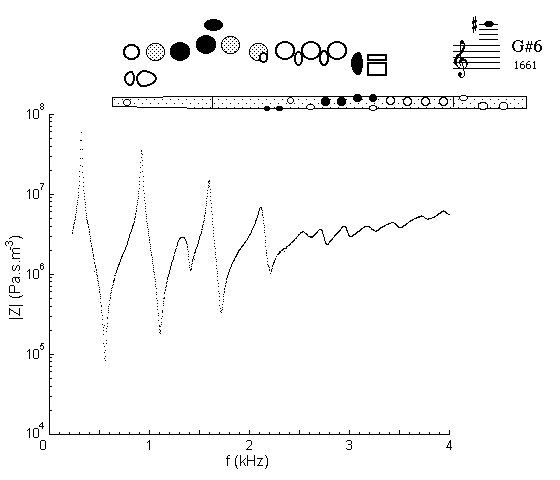| Acoustics of baroque, classical and modern flutes |
modern flute
|
G#6 |

|
Fingering Acoustic schematic Non-specialist introduction
to acoustic impedance |
This fingering is comparable to that for G#4 except
for the use of the thumb key and first finger keys as register
holes. Comparing this with the G#4 impedance
spectrum, we see that the fourth minimum is little changed. The third is shallower
and unplayable. The first minimum plays C#5 and the second ~C 6.
Combinations of these three notes may be played simultaneously as multiphonics.
6.
Combinations of these three notes may be played simultaneously as multiphonics.
| Acoustic measurements are available for these flutes - modern B, modern C, classical C, classical D, classical flared, baroque Sound clips are available for modern B, classical flared and baroque |
To compare flutes, it is easiest to open a separate browser window for each instrument. |